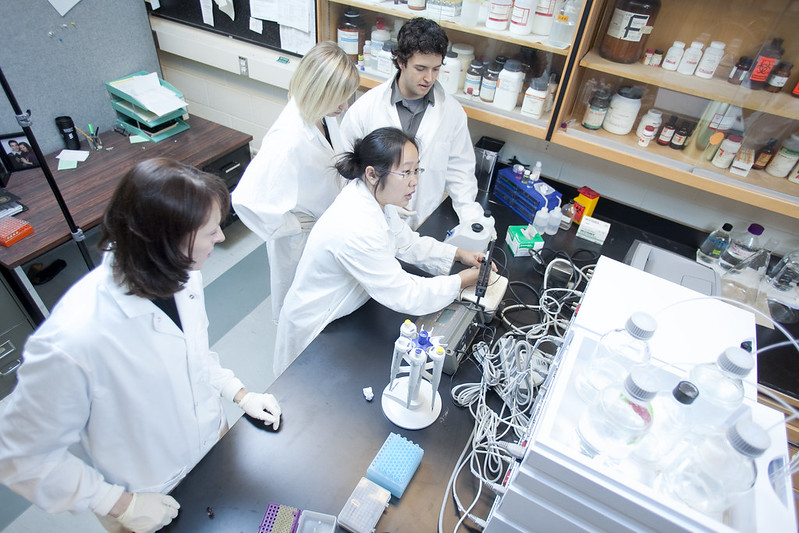
From Student to Researcher (in one Term!) Post 1: Introducing the CURE
This post is the first in a series about integrating the CURE experiential learning approach into your course(s).
By Harold Bull, Dawn Giesbrecht, and Sheryl Mills(This blog series is authored by USask denizens Harold Bull, Dawn Giesbrecht and Sheryl Mills) Harold is Assistant Professor Biochemistry, Microbiology & Immunology. Dawn is Laboratory Instructor Anatomy, Physiology and Pharmacology; Biochemistry, Microbiology and Immunology. Sheryl is Associate Director, Academic Programs & Interprofessional Education)
We (Harold and Dawn) have been offering BMIS 380.3: Team Based Experimental Microbiology for the past three years. We structured it as a “CURE”. CURE stands for Course-based Undergraduate Research Experience'. CUREs are “experiential learning” opportunities that share five main attributes (Auchincloss et al 2014):
1) The use of scientific practices (asking questions, building and evaluating models, proposing hypotheses, designing studies, selecting methods, gathering and analyzing data, interpreting findings and communicating findings)
2) Discovery: Outcomes are unknown by learners—and instructors. Essentially everyone involved is a learner
3) Broadly relevant or important work that has meaning beyond the particular course context
4) Collaboration: Learners work in self-directed, self-managed research teams in consultation with instructional staff
5) Iteration: There are opportunities to repeat or revise aspects of their own or other learners’ investigations. Learners learn by trying, failing, and trying again, and by critiquing one another’s work, especially to the extent to which claims can be supported by evidence
In this CURE course, we have integrated all five key attributes. Individually these five attributes are not unique to CUREs, but collectively they distinguish CUREs from other instructional approaches that are high impact educational practices.
What happens?
In the first few weeks of this course learners start with a training experience (Project 1). They work in groups to carry out a short series of protocols they have all learned in introductory courses and have done parts of the procedures in more traditional lab courses.
Project 1: Learners purify a plasmid from one bacterial strain, quantify their yield, then transform the plasmid DNA into a new recipient strain and quantify the efficiency. Unlike a more traditional lab course, groups must find and/or create their own protocols and prepare their own reagents. This first exposure to ‘the real world of research’ has the desired effect of engaging learners and often serves as their first confrontation with their own limits and an awakening of the agency they can administer over their own learning.
Project 2: Although given the choice to change group members for Project 2, seldom do learners shift. By the time Project 2 begins, we have observed that ‘groups’ have become ‘teams’. Learners work in these teams to define their own projects. This includes defining their research question (identifying hypotheses to be tested), designing protocols, establishing a budget and setting out timelines for completion of deliverables. The course deliverables are bi-weekly reports, a final publication-quality article, and an in-class presentation with invited guests.
Why run a CURE?
There are three reasons why we are offering this course as a CURE:
- To provide an authentic opportunity for learners to be researchers in a collaborative team setting (and it is EASIER for instructors!)
- To provide an authentic opportunity for learners to be researchers in a collaborative team setting (and it is EASIER for instructors!)
- To provide an authentic opportunity for learners to be researchers in a collaborative team setting (and it is EASIER for instructors!)
At the undergraduate level, typically, this opportunity is available to very few learners.
In our next blog post in this series we will share the transitions in our learners as they move from thinking and acting like students to thinking and acting like research scientists over the course of the CURE’s thirteen weeks.
Find ALL BLOG POSTS IN THIS SERIES HERE.
Podcast:

